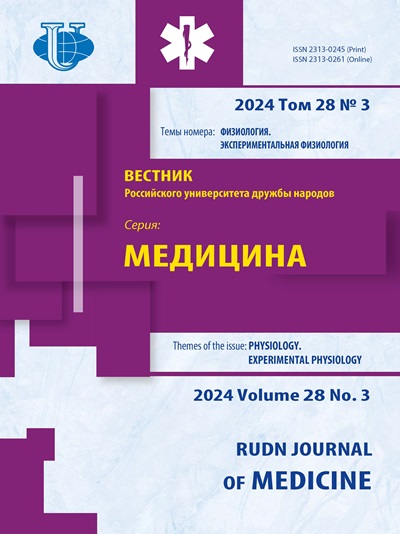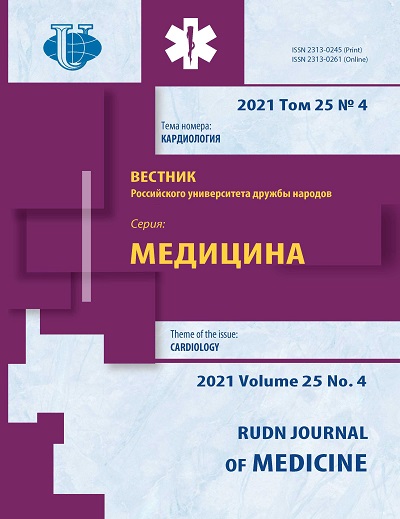Анализ инфекционной заболеваемости человека, домашних животных и птицы в России за 2016-2019 гг.
- Авторы: Бессонова Л.П.1
-
Учреждения:
- Воронежский государственный университет инженерных технологий
- Выпуск: Том 25, № 4 (2021): КАРДИОЛОГИЯ
- Страницы: 346-356
- Раздел: МИКРОБИОЛОГИЯ
- URL: https://journals.rudn.ru/medicine/article/view/29721
- DOI: https://doi.org/10.22363/2313-0245-2021-25-3-346-356
Цитировать
Полный текст
Аннотация
Актуальность . В статье приводится анализ инфекционной заболеваемости в РФ человека, домашних животных и птиц за 2016-2019 гг. Цель исследования сравнение эпизоотологической и эпидемиологической ситуации и установление корреляционной зависимости между отдельными видами зоонозов, антропонозов, а также зоонозов и антропонозов. Материалы и методы . Исследование проводилось методом обработки статистических данных, полученных в открытых источниках Росстата и ФГУ ВНИИЗЖ ИАЦ Управления Ветнадзора г. Владимир, собранные данные обрабатывали с помощью программ Ecxel и STATISTICA-10. Результаты и обсуждение . Сформирована выборка по инфекционным болезням (ИБ), которыми в указанный период были заражены люди, домашние животные, в т.ч. крупный и мелкий рогатый скот, свиньи, лошади и птицы. Рассчитан средний процент заболевших конкретным видом инфекционных болезней с учетом дифференциации по зоонозам, антропонозам и средний процент заболевших животных по всем выявленным видам ИБ, что дало возможность установить ИБ, наиболее часто встречающиеся в каждой из групп, и в целом у всех животных и птиц. Проведена оценка распределения ИБ в дифференцируемых группах, построены графики распределения и установлены формулы, по которым можно прогнозировать динамику их дальнейшего развития. С помощью программы STATISTICA-10 рассчитаны коэффициенты корреляции ( r ) между зоонозами (ХХ), антропонозами (YY), а также зоонозами и антропонозами (XY). Выводы . Определены устойчиво значимые положительных корреляционные связи для зоонозов и антропонозов. Полученные данные доказывают наличие тесной связи человека с окружающим миром и его ответственность за здоровье животных и птиц, с целью предотвращения риска заболеваний инфекционными болезнями.
Ключевые слова
Об авторах
Л. П. Бессонова
Воронежский государственный университет инженерных технологий
Автор, ответственный за переписку.
Email: lpb.bessonova@yandex.ru
ORCID iD: 0000-0003-3028-7439
г. Воронеж, Российская Федерация
Список литературы
- Макаров В.В. Прионы и прионные болезни // Российский ветеринарный журнал. 2018. N1. С. 29-34.
- Settele J., Díaz S., Brondizio E., Daszak P. COVID-19 Stimulus Measures Must Save Lives, Protect Livelihoods, and Safeguard Nature to Reduce the Risk of Future Pandemics. https:// ipbes.net/covid19stimulus (Дата обращения 03.03.2021)
- Пономаренко Д.Г., Ежлова Е.Б., Русанова Д.В., Хачатурова А.А., Пакскина Н.Д., Бердникова Т.В. и др. Анализ эпизоотолого - эпидемиологической обстановки по бруцеллезу в Российской Федерации в 2018 г. и прогноз на 2019 г. // Проблемы особо опасных инфекций. 2019. № 2. С. 14-21.
- Шабунин С.В., Бессонова Л.П., Паршин П.А., Котарев В.И. Ветеринарно-санитарные аспекты предупреждения рисков возникновения инфекционных заболеваний // Достижения науки и техники АПК. 2019. Т. 33. № 1. С. 34-37.
- Шабунин С.В., Бессонова Л.П., Паршин П.А., Котарев В.И., Болгова С.Б. Обеспечение биологической безопасности в животноводстве и птицеводстве на основе инновационных технологий, предупреждающих факторы риска // Вопросы нормативно-правового регулирования в ветеринарии. 2018. N3. С. 147-151.
- Статистические показатели по заболеваемости населения инфекционными болезнями в Российской Федерации в период с 2016 по 2019 гг. http//rosstat.gov.ru (Дата обращения 01.03.2021)
- Эпизоотическая ситуация в Российской Федерации в период с 2016 по 2019 гг. http//www.arriah.ru (Дата обращения 03.03.2021г)
















